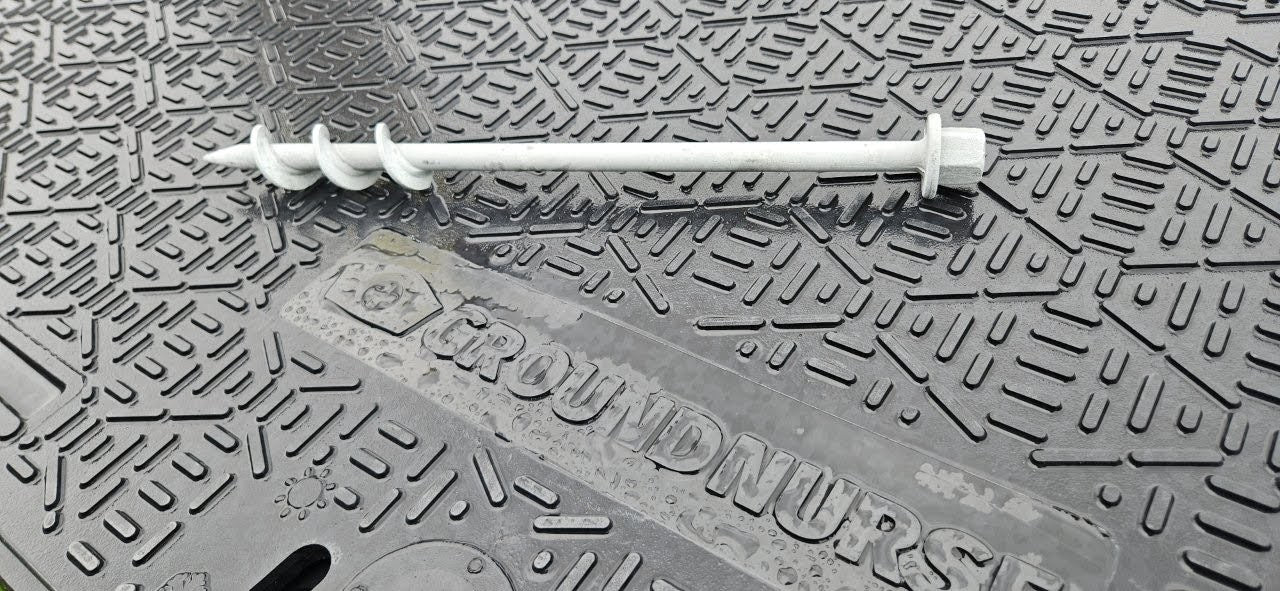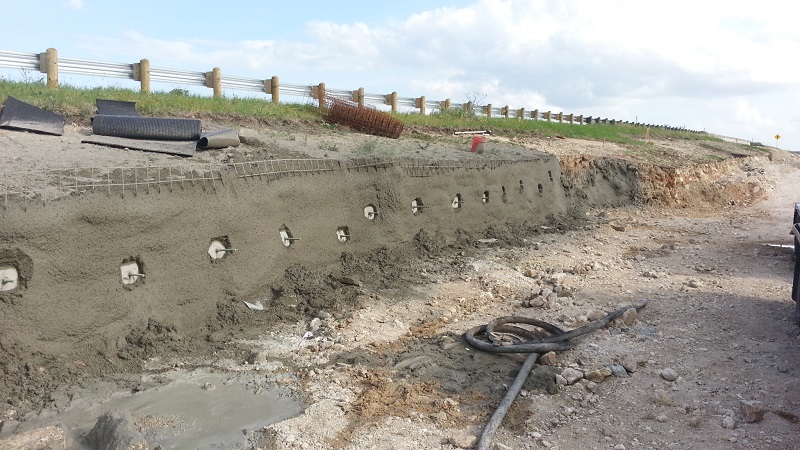How Durable Earth Anchors Work: A Comprehensive Overview to Soil Anchoring Solutions
Sturdy Earth anchors play an important role in offering stability and assistance in numerous building and construction applications. By installing deeply right into the ground, they stand up to upright and lateral forces efficiently. Various sorts of supports deal with numerous soil problems, making them functional. Recognizing their auto mechanics and setup techniques is important for making best use of efficiency. What factors influence their performance, and how do they contrast to standard methods? The responses may stun you.
Recognizing Sturdy Earth Anchors
Sturdy Earth anchors serve as crucial elements in numerous building and construction and landscape design jobs, offering security and assistance in difficult dirt conditions. These anchors function by being installed right into the ground, where they withstand side and vertical pressures. Their style permits safe attachment to structures, guaranteeing they stay anchored against soil activity or external loads.The efficiency of sturdy Earth supports mostly depends upon the type of dirt and the support's installation depth. Appropriate setup methods are essential, as they establish the support's holding capacity. Environmental factors, such as dampness and freeze-thaw cycles, can additionally impact performance.These anchors are often utilized in applications ranging from safeguarding fencings and keeping wall surfaces to maintaining momentary frameworks throughout adverse climate condition. Recognizing the concepts behind sturdy Earth supports is essential for professionals seeking to improve the longevity and safety of their projects.
Types of Heavy-Duty Earth Anchors
Different kinds of heavy-duty Earth supports are developed to meet particular requirements based on soil problems and job requirements. Helical anchors, including screw-like blades, work in softer soils, using high lots capabilities and simple setup. Driven anchors, which are inculcated the ground, appropriate for rough terrains and provide immediate load assistance. Tie-back anchors are commonly utilized in keeping wall surface applications, permitting side assistance by securing into the ground at an angle. An additional kind is the cast-in-place support, suitable for concrete applications, as they are integrated right into structures for boosted security. Lastly, soil screw supports are flexible options that can be made use of in different dirt types, providing reputable tension and compression capacities. Each type serves unique applications, guaranteeing security and safety in building and construction and landscaping tasks. Comprehending these alternatives enables educated decisions in choosing the ideal Earth anchoring option.
The Mechanics of Dirt Anchoring

Comprehending the technicians of soil anchoring needs an exam of various kinds of Earth supports and their installation methods. Each support kind presents special attributes that influence its efficiency in various soil problems. Proper installation approaches are necessary for maximizing the securing system's stability and performance.
Kinds Of Earth Anchors
Earth anchors, important parts in dirt anchoring systems, been available in a number of types, each made for particular applications and dirt problems. The most typical types include screw anchors, which are twisted into the ground, giving solid side resistance. Helical supports feature blades that permit for effective installation in different soil types, making them ideal for both irreversible and short-lived applications. Driven supports, usually made from steel, are hammered into the soil and are efficient in rough or thick settings. Auger supports make use of a helical layout to help with installation in softer soils. Ultimately, plate anchors consist of a flat plate hidden flat, distributing load over a bigger location, suitable for applications needing high load capacities in natural soils.
Installation Methods Described
Appropriate installation strategies are important for the efficiency of soil anchoring systems. The procedure generally starts with website assessment, verifying the picked area can sustain the anchor's lots. After establishing the appropriate support type, appropriate opening depth and angle must be developed. The installation involves driving the anchor right into the ground using customized tools, such as hand-operated or hydraulic drivers, to achieve ideal embedment. Post-installation, tensioning the anchor is critical to ensure security; this is typically validated with load testing. In addition, surrounding soil problems should be checked to avoid variation. Adhering to these techniques not only improves the support's performance but additionally lengthens its lifespan, providing dependable support for numerous applications.
Applications of Heavy-Duty Earth Anchors
While sturdy Earth anchors are typically connected with construction and landscaping, their flexibility encompasses a range of applications across different markets. In civil engineering, they supply crucial assistance for retaining walls, making sure security in locations vulnerable to dirt erosion. The aquatic sector utilizes these anchors for securing docks and marinas, protecting against movement triggered by currents and tides. Additionally, in the telecommunications sector, sturdy Earth supports are considerable for supporting cell towers and other high structures against wind pressures. Agricultural applications also benefit, as these anchors can safeguard frameworks like greenhouses and animals fence, ensuring they stand up to extreme weather. In addition, in eco-friendly energy projects, such as wind farms, Earth anchors play an essential function in securing turbine structures, boosting general safety and efficiency. sites This wide variety of applications highlights the adaptability and integrity of heavy-duty Earth supports across numerous fields.
Benefits Over Typical Anchoring Techniques
Traditional anchoring techniques have actually long been relied upon for security, heavy-duty Earth anchors supply considerable benefits that boost performance and efficiency. One major advantage is their superior load-bearing capability, which enables them to endure greater pressures without failing. This stamina makes them excellent for requiring applications, such as in construction and energy installations.Additionally, sturdy Earth anchors are created for much deeper installation, supplying higher security in different dirt problems, consisting of sandy or loosened dirts. Their resistance to corrosion and environmental elements ensures a much longer life-span and lowered upkeep prices compared to traditional methods.Moreover, these anchors can be set up with marginal disruption to the surrounding location, protecting the stability of the landscape. On the whole, heavy-duty Earth anchors provide a effective and dependable service for securing demands, going beyond the constraints frequently connected with conventional anchoring techniques.
Installation Process and Finest Practices
The setup process for soil securing services begins with comprehensive prep work and website evaluation to ensure peak efficiency. Following this, a step-by-step installation guide supplies clear directions for efficient application (tensile load anchors). Adhering to these finest methods is important for attaining durable and reputable anchoring results
Prep Work and Website Evaluation
Efficient preparation and extensive learn this here now website examination are vital actions in the installation of soil anchoring services. Prior to installation, the soil type should be analyzed to establish its bearing capability and suitability for securing. Carrying out a geotechnical study can give important information concerning soil make-up, moisture levels, and possible ground activity. Additionally, recognizing existing frameworks, greenery, and energies is essential to stay clear of disturbance during installment. The location must be removed of debris and barriers to guarantee risk-free access for devices. Climate condition should likewise be kept an eye on, as damaging problems can affect both security and installment efficacy. By thoroughly preparing the website and evaluating all appropriate variables, the probability of effective anchor efficiency is considerably increased.
Step-by-Step Installation Guide
A detailed installment procedure is essential for attaining perfect performance of soil securing services. The installation starts with picking the suitable anchor type and ensuring the site is clear of particles. Next off, appropriate opening positioning is figured out based on load requirements. Once the location is developed, holes are drilled to the defined deepness and diameter using the right tools. The anchor is then inserted right into the opening, ensuring it is aligned correctly. After protecting the anchor, soil is backfilled and compacted to improve security. It is important to adhere to supplier guidelines throughout the procedure. A post-installation inspection verifies that the anchors are adequately located and functioning as intended, supplying trusted support for the designated application.

Maintenance and Examination of Earth Anchors
Normal maintenance and inspection of Earth supports are necessary for making sure long-term efficiency and stability. Periodic checks enable the very early detection of concerns such as corrosion, loosening, or dirt activity. Assessors should try to find indicators of corrosion or degradation on the anchor components, especially at the connection factors. Furthermore, the bordering dirt must be analyzed for erosion or changes in moisture web content, which can affect anchor effectiveness.It is recommended to establish a regular inspection routine, preferably a minimum of annually, depending upon ecological conditions. Throughout examinations, all visible parts must be cleaned up to eliminate dirt or debris that could conceal prospective troubles. Any type of indicators of distress, such as turning frameworks or unusual settling, must motivate instant analysis. Proper documents of inspections can help in tracking anchor performance gradually and facilitate prompt upkeep actions, making sure the supports continue to be dependable and practical.
Frequently Asked Concerns
What Products Are Heavy-Duty Earth Anchors Typically Made From?
Heavy-duty Earth anchors are normally constructed from resilient materials such as galvanized steel or stainless-steel, making sure stamina and resistance to corrosion. These materials provide long-lasting support and stability in numerous dirt conditions and applications.
How Do Dirt Conditions Affect Support Efficiency?
Dirt problems greatly affect anchor efficiency. Aspects such as soil kind, wetness content, and compaction affect the support's hold and security, with natural soils usually giving much better resistance than sandy or loosened soils, affecting general effectiveness.
Can Heavy-Duty Earth Anchors Be Reused After Elimination?
Heavy-duty Earth supports can be reused after elimination, supplied they are examined for damages and wear. Proper cleaning and maintenance boost their durability, making sure efficient performance in succeeding installations when conditions enable secure reinstallation.
What Are the Environmental Influences of Using Earth Anchors?
The ecological impacts of making use read more of Earth anchors include potential dirt disruption, disruption of neighborhood environments, and feasible contamination of groundwater. Nevertheless, if used properly, their advantages commonly surpass these issues, advertising security in various applications.
Just how Do I Choose the Right Support for My Project?

Comments on “heavy-duty earth anchors vs. Traditional Methods”